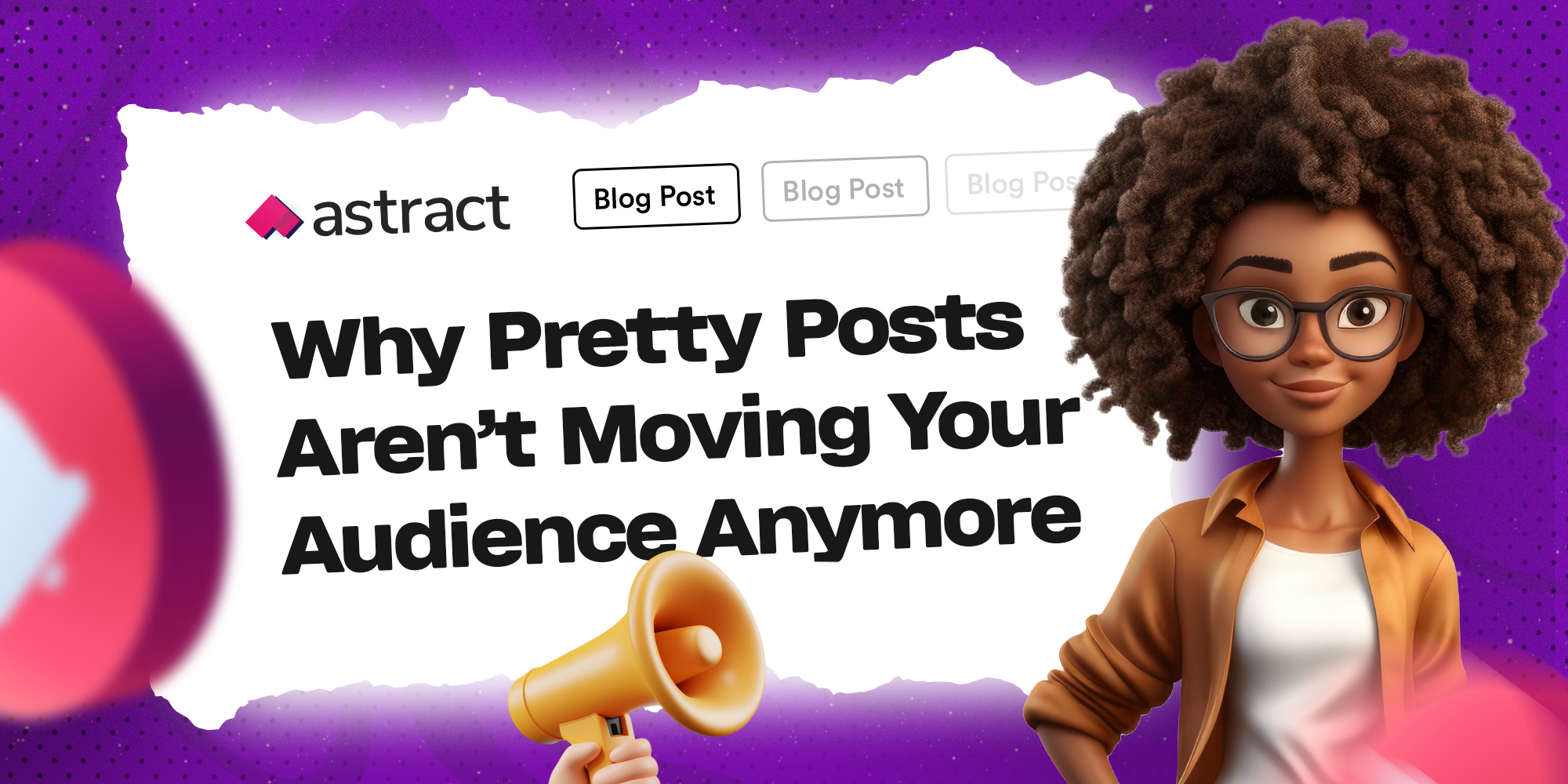Not too long ago, social media rewarded white flat lays and color-coordinated grids, but it’s now a world away from that. Audiences are scrolling past “pretty” posts, so brands can’t rely solely on aesthetics to get customers’ attention.
This new era rewards brands that create pathways to have genuine conversations with their customers, and this is where storytelling through content creation comes in. In this article, we’ll break down how storytelling is a great hack for brands that want and some brand storytelling ideas and tips we recommend you try out.

Brand Storytelling: The Original Engagement Hack
A psychologist, Jerome Bruner, found out in his research that we are 22 times more likely to remember a fact when it’s wrapped around a story. Everyone likes a good story and it’s always been how humans connect. Before there were brands, funnels, or swipe-up links, there were stories. If you could go back to the television ads that stuck with you, you would find that they are rooted in good and relatable stories.
When a brand tells a compelling story about a product or customer, it creates an emotional bridge. People remember how you made them feel, not what font you used on Canva.
But, what does storytelling look like in the age of digital marketing? In the next part of the article, we highlighted some great storytelling marketing ideas to create strong and relatable narratives. This is for brands and creators who want to return to storytelling as a basic way of connecting with other people.
5 Storytelling Ideas for Brands and Creators
Let’s be clear: design and aesthetics matter, but when visuals aren’t layered with meaning, they’re just… pretty.
Pretty doesn’t equal persuasiveness. You can post a great product image, but if it doesn’t answer unspoken questions in your audience’s mind, like: Should I care? Is this for someone like me? What makes this different? Then you’ve lost them before you even had them. This is why brands that tell good stories sell more.
Here’s the good news: your brand already has stories. You just haven’t framed them yet.
How do you start telling better stories?
Let’s break it down into 10 storytelling marketing ideas and entry points for brands:
1. Founder/Origin/Underdog Story
A great brand storytelling idea is to make your founders visible and maybe even relatable. Why did you start? What did you believe the world was missing and wanted to solve? Talk about the moment you said, “I have to make this.” Don’t wait for a podcast interview, put it on your feed as images, carousels, videos, or even a written post.
You can also show your brand’s journey from humble beginnings, the office you started in vs. now, the many nos before a yes, and so on. For example, Warby Parker’s origin story is of one founder losing his glasses and struggling to afford replacements, hence their mission to provide affordable eyewear. This resonates with audiences seeking authenticity and relatability.
2. Customer Transformation Story
One thing that makes customer stories effective is the emotional connection they can create with your potential customers. People don’t like being sold to; they like to see proof and hear someone else tell your story. So instead of telling customers how great your brand is, let customers who have benefited from it tell them. Not just reviews or testimonials, but transformation stories. What was someone struggling with before your service? What shifted after? How did they feel? Create customer success stories and case study content, and use visuals to drive your point.
You can learn from Piggyvest’s approach to customer stories. This FinTech brand highlights its customers through series like Saver of the week, which centers on a customer who has benefited from saving on the platform.
3. Values-Driven Content
What do you stand for and what drives your brand? These are your core values, and you should communicate them through your content to help customers align with your ethos. Today’s audience, especially younger generations, is socially conscious and loves brands that align with their values and beliefs. Whether it’s sustainability, accessibility, inclusivity, or representation, your values can be a story.
In addition, invest in implementing directives that show that you care about these values. Instead of a vague caption like “We care about quality,” show people how that quality is maintained, what you won’t compromise on, and why. You can also shine a light on your cultural impact and how your brand has contributed to relevant causes or trends.
Read Also>>> Using Storytelling To Set Your Brand Apart – All The Tips You Need
4. Behind-the-Scenes Process
The way you package orders, a failed prototype, and the playlist you listen to while designing. These tiny peeks humanize your brand and will generate more resonance than most types of content. Behind the scenes can also cover micro moments in your day, like a funny DM exchange or a customer who called just to say thank you. These are stories too. Pull back the curtain once in a while to allow people to see a bit of themselves in your brand’s journey.
5. Product/Services Stories
One of the most effective brand narratives is showing your products or services in action. How does your product help solve a particular problem and make things easy for your target audience? This is an opportunity to show your expertise and explain the why and how of your product. It also helps customers know why they need your product and what sets you apart from businesses with similar products.
Brand Storytelling: 5 Key Features That Make a Good Brand Story
Incorporate these five elements into your brand stories to improve its reach and impact:
Brand Voice: This describes the language you use to tell your brand story. Is it casual, professional, strict, or funny? It’s best to stick to a consistent voice that your audience can eventually associate with you.
Brand Tone or Personality: While voice is about language, tone describes the kind of emotions that your brand portrays. For example, sports brands are passionate, and non-profits or advocacy brands sound empathetic. Whatever tone or personality you choose, make sure it complements the core of your brand. It should define the brand’s overall image and be easy to relate to.
Story/Message: What is the key message in your story? What should readers and customers take away? It’s best to focus on one clear message, use real voices and faces to pass this message, and use a narrative that is immersive or interactive. A good brand story should be relevant to your audience and their interests, which means they should be able to see themselves in the story. Your story shouldn’t be at odds with your brand and should evoke emotions like joy, anger, urgency, fear, etc.
Purpose/Call to action: What is the purpose of your story, and what do you want your audience to do afterward? It could be anything from increasing engagement to buying a ticket or updating them on your brand. Your audience should know what to do next, and you can achieve this with a clear call to action.

Visual Identity: Your logo, colors, designs, website, and other visual elements contribute to your brand story. Visuals can shape people’s perception of your brand, so you should leverage that to sell a story and improve people’s interaction with your brand. For example, purple gives off a different vibe and personality compared to red, so it’s important to find what visual works best with your brand and your offering or values. In a recent article, we explored the psychology of colors and how smart brands use it to win customers.
In Summary
With so many emails to send and deadlines to meet, it’s easy to lose track of the story behind your brand. However, it’s important to invest in brand stories because audiences don’t just want to admire your brand. They want to belong to it. And the way you invite them in is by giving them a story worth staying for.
Meanwhile, you don’t have to ditch design; instead, you let it complement your storytelling. Your aesthetic catches the eye while your story holds the heart so a good brand storytelling is balancing looks and substance.








